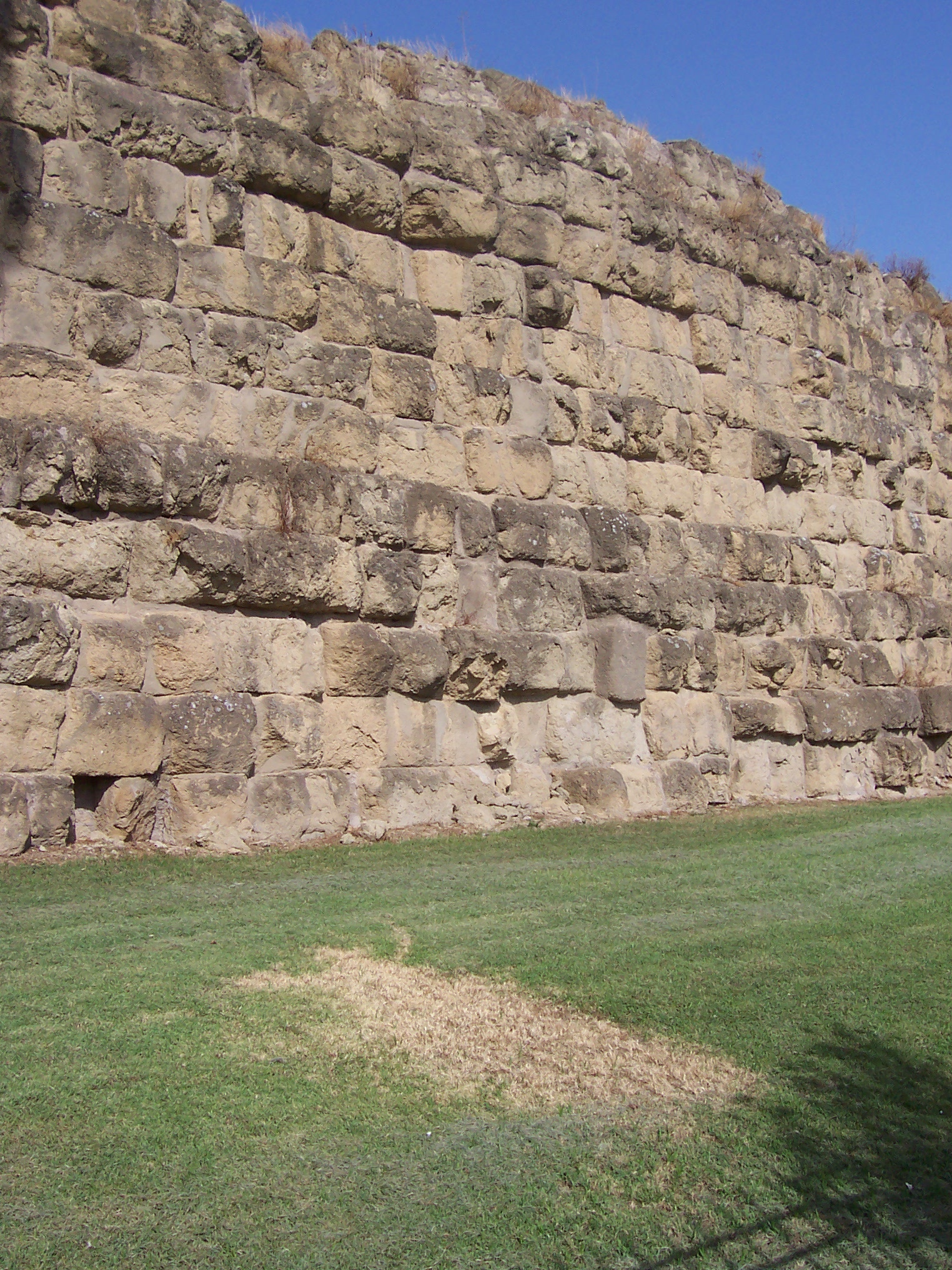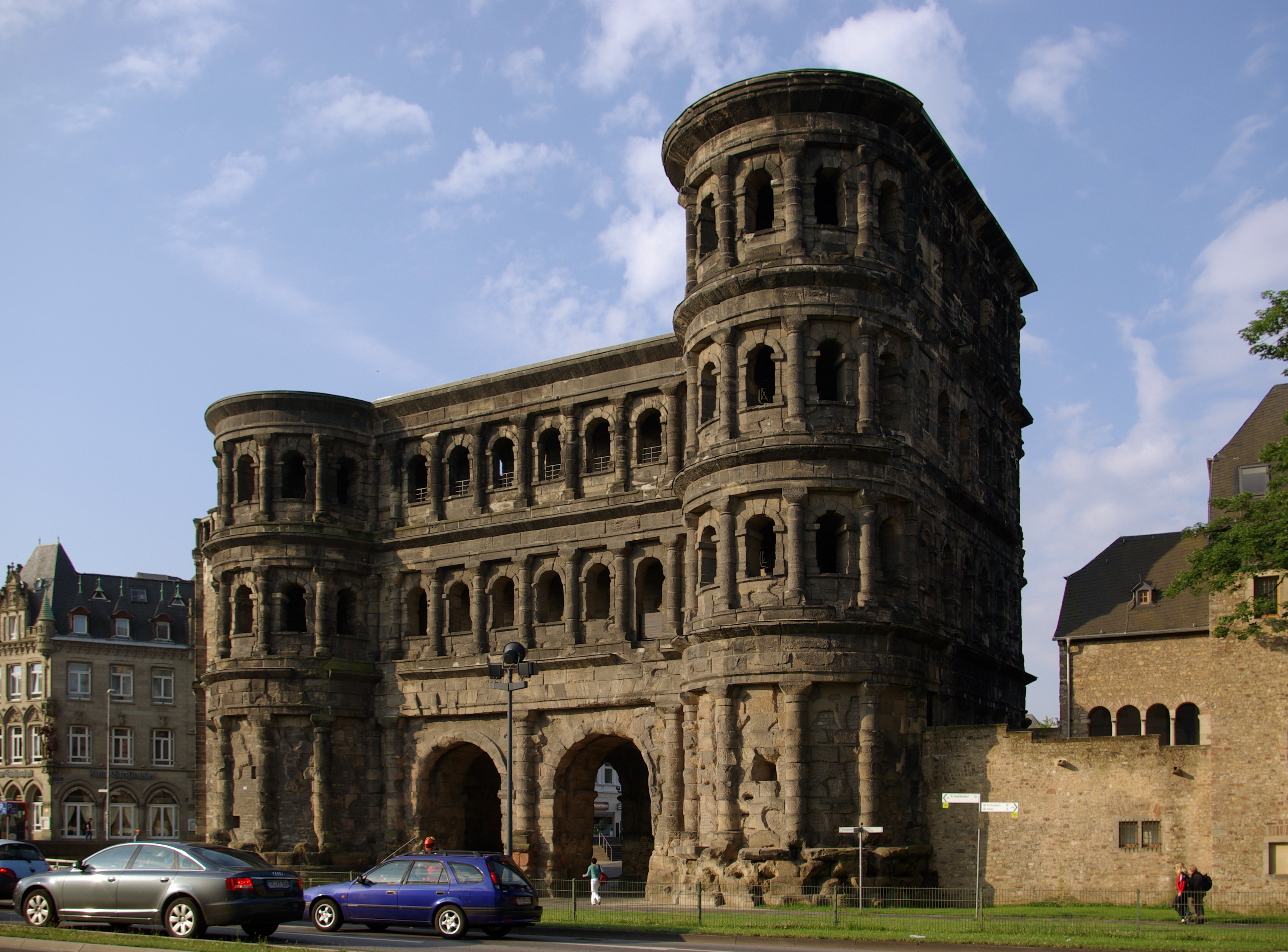Ancient Roman defensive walls on:
[Wikipedia]
[Google]
[Amazon]


/ref> and is believed to have had 16 main gates, though many of these are mentioned only from writings, with no other known remains. Some of it had a ''fossa'' or ditch in front, and an agger behind, and it was enough to deter Hannibal. Later the Aurelian Wall replaced it, enclosing an expanded city, and using more sophisticated designs, with small forts at intervals. The Romans walled major cities and towns in areas they saw as vulnerable, and parts of many walls remain incorporated in later defences, as at Córdoba (2nd century BC), Chester (earth and wood in the 70s AD, stone from c. 100), and

 Notable walls built by
Notable walls built by


Defensive walls
A defensive wall is a fortification usually used to protect a city, town or other settlement from potential aggressors. The walls can range from simple palisades or earthworks to extensive military fortifications with towers, bastions and gates ...
are a feature of ancient Roman architecture
Ancient Roman architecture adopted the external language of classical Ancient Greek Architecture, Greek architecture for the purposes of the ancient Romans, but was different from Greek buildings, becoming a new architecture, architectural style ...
. The Romans generally fortified cities, rather than building stand-alone fortresses, but there are some fortified camps, such as the Saxon Shore forts like Porchester Castle
Portchester Castle is a medieval fortress that was developed within the walls of the Roman Saxon Shore fort of Portus Adurni at Portchester, to the east of Fareham in Hampshire.
The keep was probably built in the late 11th century as a ba ...
in England. City walls were already significant in Etruscan architecture
Etruscan architecture was created between about 900 BC and 27 BC, when the expanding civilization of ancient Rome finally absorbed Etruscan civilization. The Etruscans were considerable builders in stone, wood and other materials of temples, hou ...
, and in the struggle for control of Italy under the early Republic many more were built, using different techniques. These included tightly-fitting massive irregular polygonal blocks, shaped to fit exactly in a way reminiscent of later Inca
The Inca Empire (also known as the Incan Empire and the Inka Empire), called ''Tawantinsuyu'' by its subjects, (Quechua for the "Realm of the Four Parts", "four parts together" ) was the largest empire in pre-Columbian America. The admin ...
work. The Romans called a simple rampart wall an agger; at this date great height was not necessary. The Servian Wall
The Servian Wall ( la, Murus Servii Tullii; it, Mura Serviane) was an ancient Roman defensive barrier constructed around the city of Rome in the early 4th century BC. The wall was built of volcanic tuff and was up to in height in places, wide ...
around Rome was an ambitious project of the early 4th century BC. The wall was up to 10 metres (32.8 ft) in height in places, 3.6 metres (12 ft) wide at its base, 11 km (7 mi) long,Fields, Nic; Peter Dennis ''The Walls of Rome'' Osprey Publishing; 10 Mar 2008 p.1/ref> and is believed to have had 16 main gates, though many of these are mentioned only from writings, with no other known remains. Some of it had a ''fossa'' or ditch in front, and an agger behind, and it was enough to deter Hannibal. Later the Aurelian Wall replaced it, enclosing an expanded city, and using more sophisticated designs, with small forts at intervals. The Romans walled major cities and towns in areas they saw as vulnerable, and parts of many walls remain incorporated in later defences, as at Córdoba (2nd century BC), Chester (earth and wood in the 70s AD, stone from c. 100), and
York
York is a cathedral city with Roman origins, sited at the confluence of the rivers Ouse and Foss in North Yorkshire, England. It is the historic county town of Yorkshire. The city has many historic buildings and other structures, such as a ...
(from 70s AD). Strategic walls defending the frontiers of the Empire by running across open country were far rarer, and Hadrian's Wall (from 122) and the Antonine Wall (from 142, abandoned only 8 years after completion) are the most significant examples, both on the Pictish
Pictish is the extinct Brittonic language spoken by the Picts, the people of eastern and northern Scotland from Late Antiquity to the Early Middle Ages. Virtually no direct attestations of Pictish remain, short of a limited number of geographica ...
frontier. Most defences of the borders of the Roman Empire
The borders of the Roman Empire, which fluctuated throughout the empire's history, were realised as a combination of military roads and linked forts, natural frontiers (most notably the Rhine and Danube rivers) and man-made fortifications whic ...
relied on systems of forts and roads without attempting a continuous barrier.
Examples
 Notable walls built by
Notable walls built by ancient Rome
In modern historiography, ancient Rome refers to Roman civilisation from the founding of the city of Rome in the 8th century BC to the collapse of the Western Roman Empire in the 5th century AD. It encompasses the Roman Kingdom (753–509 BC ...
include, in chronological order of construction:
* Servian Wall
The Servian Wall ( la, Murus Servii Tullii; it, Mura Serviane) was an ancient Roman defensive barrier constructed around the city of Rome in the early 4th century BC. The wall was built of volcanic tuff and was up to in height in places, wide ...
, built around Rome in the early 4th century BC
* Roman walls of Córdoba
* Colchester town walls, built after the Boudiccan revolt c.65–80 A.D
* Chester city walls
Chester city walls consist of a defensive structure built to protect the city of Chester in Cheshire, England. Their construction was started by the Romans when they established the fortress of Deva Victrix between 70 and 80 E It originat ...
, originating as part of the fortress of Deva Victrix between 70 and 80 AD
* York city walls
York has, since Roman times, been defended by walls of one form or another. To this day, substantial portions of the walls remain, and York has more miles of intact wall than any other city in England. They are known variously as York City Wa ...
, originally constructed around 71 AD when York was a Roman colony
* Hadrian's Wall, built in England beginning in 122 AD at the edge of Roman conquest to keep out the Scots
* Antonine Wall, a short-lived, advanced frontier wall built in Scotland north of Hadrian's Wall beginning in 142 AD
* Serdica
Serdika or Serdica ( Bulgarian: ) is the historical Roman name of Sofia, now the capital of Bulgaria.
Currently, Serdika is the name of a district located in the city. It includes four neighbourhoods: "Fondovi zhilishta"; "Banishora", "Orlandov ...
first defensive walls build between 176-180 under Marcus Aurelius
Marcus Aurelius Antoninus (Latin: áːɾkus̠ auɾέːli.us̠ antɔ́ːni.us̠ English: ; 26 April 121 – 17 March 180) was Roman emperor from 161 to 180 AD and a Stoic philosopher. He was the last of the rulers known as the Five Good ...
as evidenced by inscriptions above the gates. Serdica again flourished in the 6th century during the reign of Justinian I
Justinian I (; la, Iustinianus, ; grc-gre, Ἰουστινιανός ; 48214 November 565), also known as Justinian the Great, was the Byzantine emperor from 527 to 565.
His reign is marked by the ambitious but only partly realized ''renova ...
, when its defensive walls were reinforced by doubling their thickness and adding more towers, and whose remnants can still be seen today.
* London Wall
The London Wall was a defensive wall first built by the Romans around the strategically important port town of Londinium in AD 200, and is now the name of a modern street in the City of London. It has origins as an initial mound wall and ...
, built around Londinium between 190 and 225, probably between 200 and 220
* Roman walls of Lugo, built between 263 and 276 AD to defend the Roman town of Lucus Augusti (in what is now Spain)
* Aurelian Walls, the later wall of Rome, built in the late 3rd century AD
* Diocletianopolis city walls of 2.3 km total length were built in the early 4th century after the Gothic invasions.
* Walls of Constantinople
The Walls of Constantinople ( el, Τείχη της Κωνσταντινουπόλεως) are a series of defensive stone walls that have surrounded and protected the city of Constantinople (today Istanbul in Turkey) since its founding as the ...
, a great defensive wall that defended the metropolitan capital from the fourth century AD until 1453
* Anastasian Wall, a wall named built in the late 5th century to ensure extra defenses for Constantinople. It was not very effective, and was abandoned in the 7th century.
* Venta Silurum, Caerwent, Wales. Venta Silurum was a town in the Roman province of Britannia. The walls are some of the best examples in the UK.
See also
* Museum of the Walls, Rome * Roman military frontiers and fortifications *Limes (Roman Empire)
(Latin, singular; plural: ) is a modern term used primarily for the Germanic border defence or delimiting system of Ancient Rome marking the borders of the Roman Empire, but it was not used by the Romans for that purpose. The term has been ex ...
, a border defense or delimiting system of ancient Rome
References
Further reading
*Wilson, Barbara, Mee, Frances, ''The City Walls and Castles of York: The Pictorial Evidence'', 2005, York Archaeological Trust, {{ISBN, 978-1-874454-36-6Walls
Walls may refer to:
*The plural of wall, a structure
*Walls (surname), a list of notable people with the surname
Places
* Walls, Louisiana, United States
* Walls, Mississippi, United States
* Walls, Ontario, neighborhood in Perry, Ontario, C ...
Walls
*